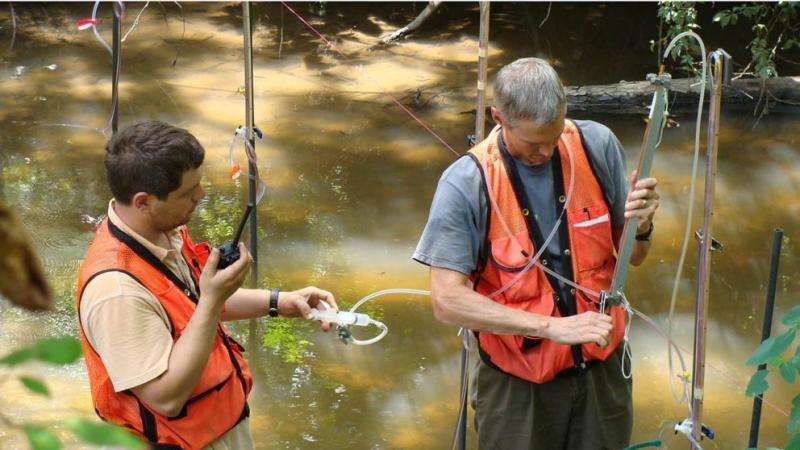Researchers develop novel approach for quantifying nitrate discharge from groundwater to streams

Researchers from North Carolina State University have developed a new way to determine the rate at which nitrate pollution will make its way from groundwater into streams. The work has implications for predicting long-term pollution in groundwater-fed streams.
Nitrate pollution, primarily from fertilizer runoff, is one of the major freshwater contaminants in the United States. Additionally, the pollution persists in aquifers – and thus in groundwater—which feed into streams over a period of years or decades.
Measuring the rate of movement, or flux, of nitrate from groundwater into streams is critical to understanding how this pollutant moves through the environment and to assessing the effectiveness of water quality management. However, nitrate flux has traditionally been difficult to measure and since there is no standard method for doing so, it is rarely measured.
David Genereux, professor of hydrogeology at NC State, along with Troy Gilmore, former NC State Ph.D. student, current faculty member at the University of Nebraska and first author of a paper describing the research, wanted to see if there was a reliable way to measure the flux. They developed a new form of aquifer analysis that uses field sampling results to estimate the rate at which nitrate contamination will be flushed from an aquifer into streams in the coming decades.
Gilmore, Genereux, and the team focused on West Bear Creek, a tributary of the Neuse River near Goldsboro, North Carolina. By measuring the concentrations of nitrate and age-dating tracers in the groundwater, and the rate of groundwater flow upward through the streambed, they were able to calculate the rate of change of pollutant nitrate mass in the aquifer, the current nitrate flux out of the aquifer and into the stream, and future values of this flux over the next few decades.
"Our new approach captures in a few days of field sampling what might otherwise require many years of long-term monitoring or a complex numerical computer model of hydrology and water quality," Gilmore says. "And the results have caught the attention of water resources managers and regulators in both North Carolina and Nebraska."
During 2013, the year in which the measurements were taken, the researchers found that the rate of nitrate input to the aquifer dropped by 6 percent. Additionally, they found the rate of nitrate output from the aquifer was about 10 percent greater than the rate of nitrate input to the aquifer – in other words, there was 10 percent less nitrate going into the aquifer than was coming out.
"Even though nitrate input to the water table aquifer we studied has been dropping for 15 to 20 years, nitrate output from the aquifer to West Bear Creek may hold steady or even increase for 10 years or more before starting to drop, because of the long lag time in the response of aquifer output to streams," says Genereux. "Hopefully hydrologists will be able to utilize our new method to assess pollutant fluxes, and see if pollution management techniques are working long-term."
More information: Troy E. Gilmore et al. Quantifying an aquifer nitrate budget and future nitrate discharge using field data from streambeds and well nests, Water Resources Research (2016). DOI: 10.1002/2016WR018976
Journal information: Water Resources Research
Provided by North Carolina State University



















